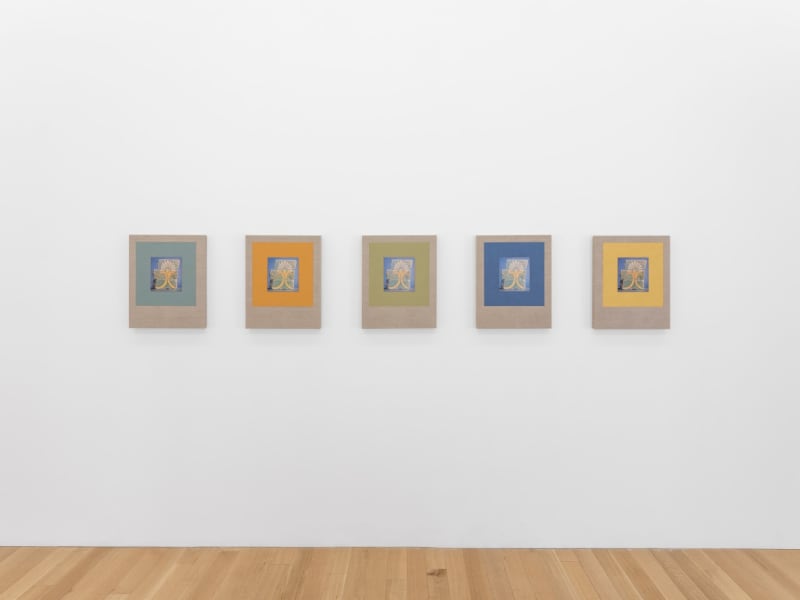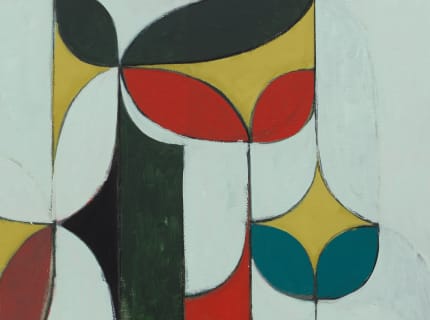During our conversation at the Peter Blum Gallery, Iranian-American artist Kamrooz Aram joked, “When you're identified as an Arab long enough, maybe you become kind of arabesque.” It’s a pun that embraces the many double entendres in the artist’s practice. Aram plays with and debunks notions and structures that we think we know—we being victims of received wisdom. The artist revisits many recognizable forms—the problematic arabesque being a focus of his efforts, but others tropes and gestures as well, pulled from antiquity (Islamic and otherwise), carpets and textiles, and the works of modernist architects such as LeCorbusier. Aram imbues these forms with alternative readings; or sometimes just plays with the idea of removing what we thought we knew and instead leaving an enigmatic lacunae. His project at the Arts Club of Chicago exposed the vestigial gendering of spaces in modernist architecture, and his current exhibition at Peter Blum, Elusive Ornament insists that we do the work to move beyond dismissing beauty that we can’t contextualize as merely decorative or ornamental.
William Corwin (Rail): In her essay “Radical Ornament,” written for your new monograph published by Peter Blum, Lauren O’Neill Butler says you received a “somewhat traditional education in painting,” akin to the Hans Hofmann school, which I thought was interesting because Hans Hofmann was very radical in his day. But that raises questions about a painter's training. What was your training in painting?
Aram: Well it has been a while since my undergraduate education, and much longer since Hans Hofmann was considered to be radical. Before attending the MFA program at Columbia, I studied at the Maryland Institute College of Art, which has always had a reputation as a good painting school. Traditional, in this context, might refer to a more technical training. I only started painting when I was about seventeen years old, and while I had an intuition for it, this technical training was invaluable for me. The foundation program at MICA also taught the modernist tradition of color by way of Albers and Itten.
...
Read full article at brooklynrail.org

